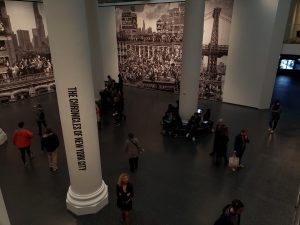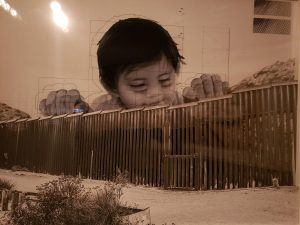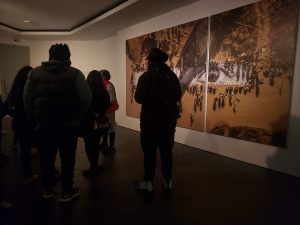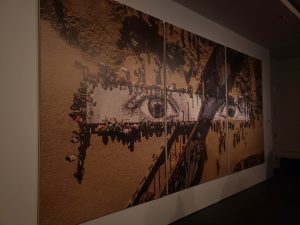Who exactly is JR? JR is an unidentified French-born artist, yet he is well known by his amazing, original artworks. He started out on the streets of Paris and began his career as a teenage graffiti artist by making his mark on public space and society. JR now collaborates with communities by taking individual portraits, reproducing them at a monumental scale, sometimes illegally in nearby public spaces. Large black-and-white photographic images in public locations. He states that the street is “the largest art gallery in the world.”
JR has the largest art gallery in the world. Thanks to his photographic collage technique, he exhibits his work free of charge on the walls of the world attracting the attention of those who do not usually go to museums. 200 Eastern Parkway Brooklyn, New York is where you’ll find JR: Chronicles. The first major exhibition in North America which is showcasing murals, photographs, videos, films, dioramas, and archival materials, all done by JR himself.
A Child curiously peeks over the Us-Mexico border in JR’s installation on immigration. Recently, we as a class, went to the Brooklyn museum to learn about the origins of JR, and his many well known artworks. To what I learned is that JR has expanded the meaning of public art through his ambitious projects that gives visibility and agency to a broad spectrum of people around the world. In the museum there was this project he made that really brought to my attention, “Kikito”.
The project “Kikito” is a monumental photograph of kikito, a one-year-old boy from Tecate, Mexico, in a location near the child’s home along the U.S. -Mexico border. I had a lot of curiosity when I first saw it. Many just see the image and will simply say that there is just a huge baby on top of the border. However just by looking at the work of art, it truly expresses plenty of emotions. The monumental photograph was meant to react to President Trump’s recent reversal of the DACA program, a policy that protects eligible immigrants (who came to the United States illegally) from deportation.
what I found so compelling is the fact that the monumental artwork is a powerful and peaceful message about child immigration, specifically the unknown fate of the 800,000 dreamers that form part of the DACA program today. This is why I loved this project so much , because not only did he made an amazing monumental photograph he also made a statement to the world. In the end the JR’s team had a picnic at the border, a large table intersecting through the border, everyone was eating at both sides. The greatest part of it was what the artist said, he said ,” The people eat the same food and drink the same water and listen to the same music,” JR says. “For a minute we were forgetting about it, passing salt and water and drinks as if there were no wall.”







